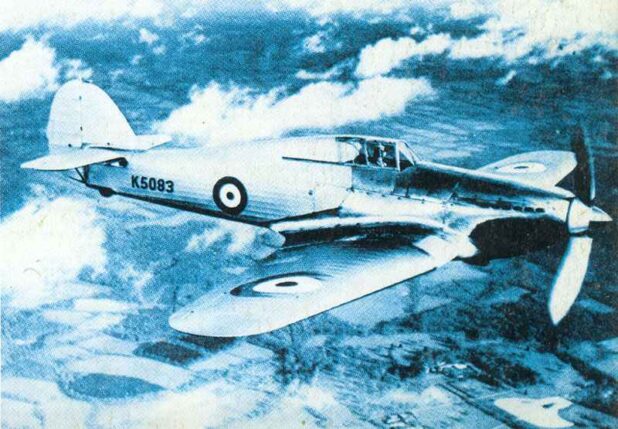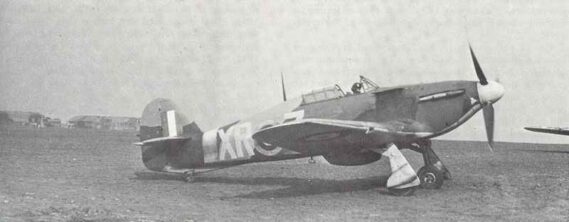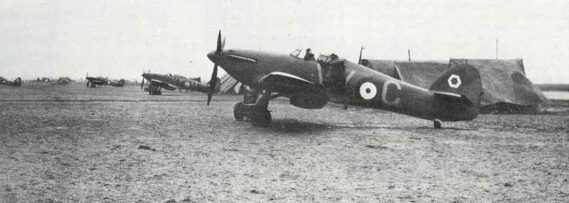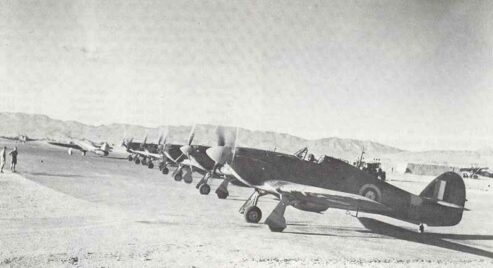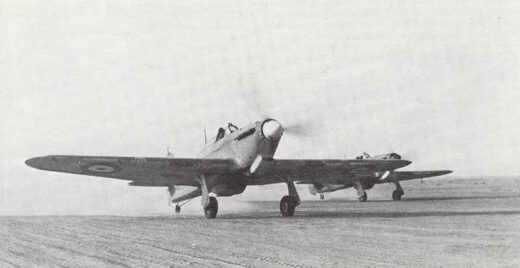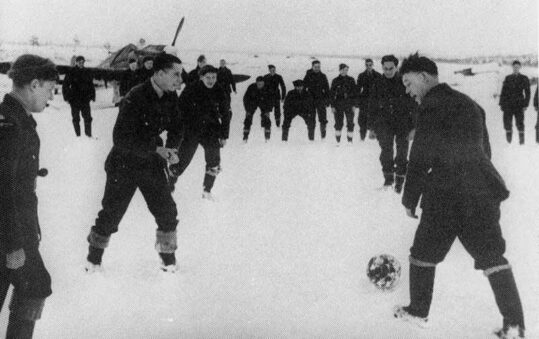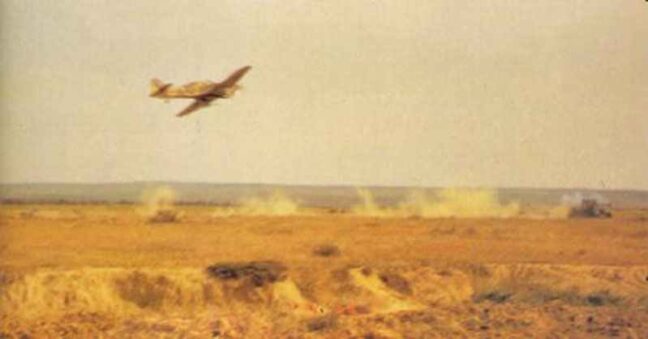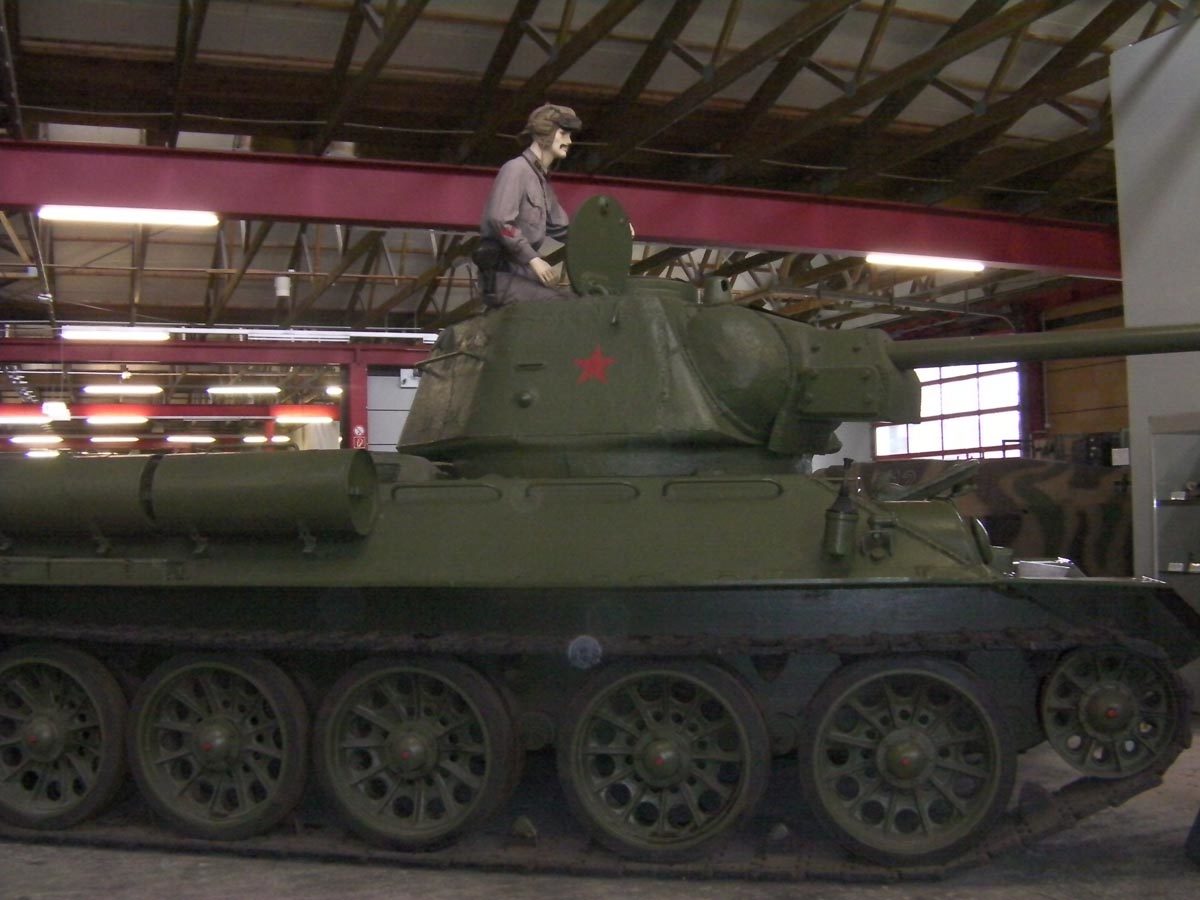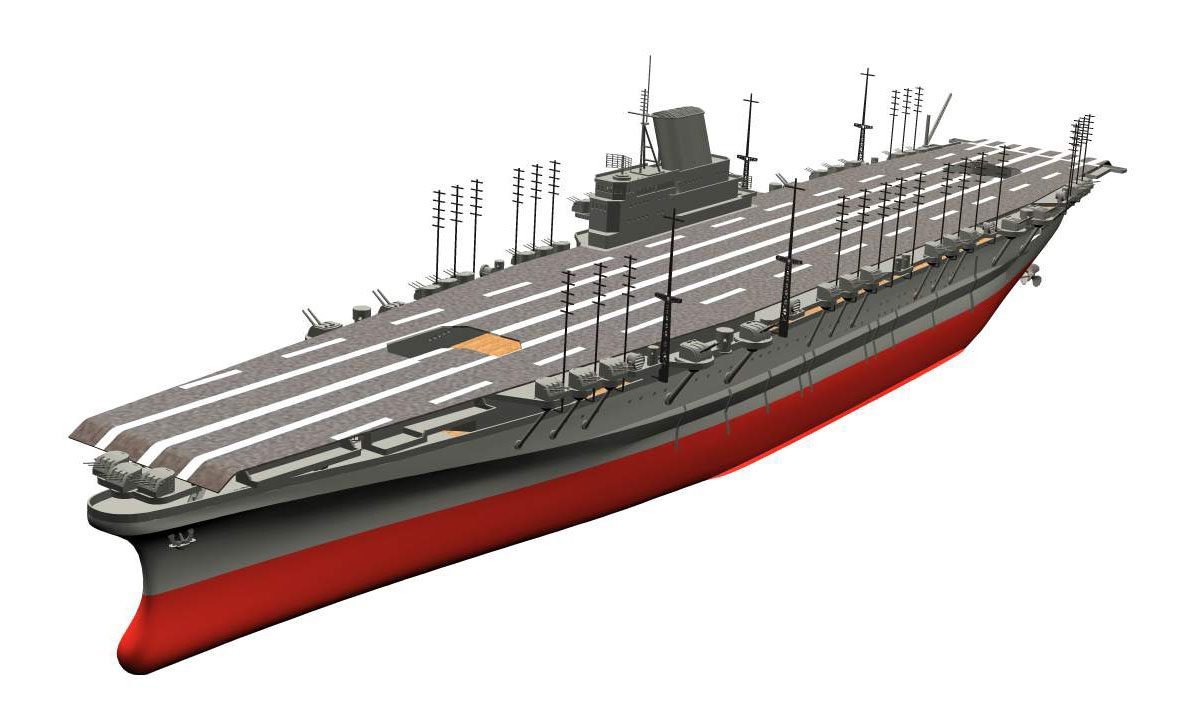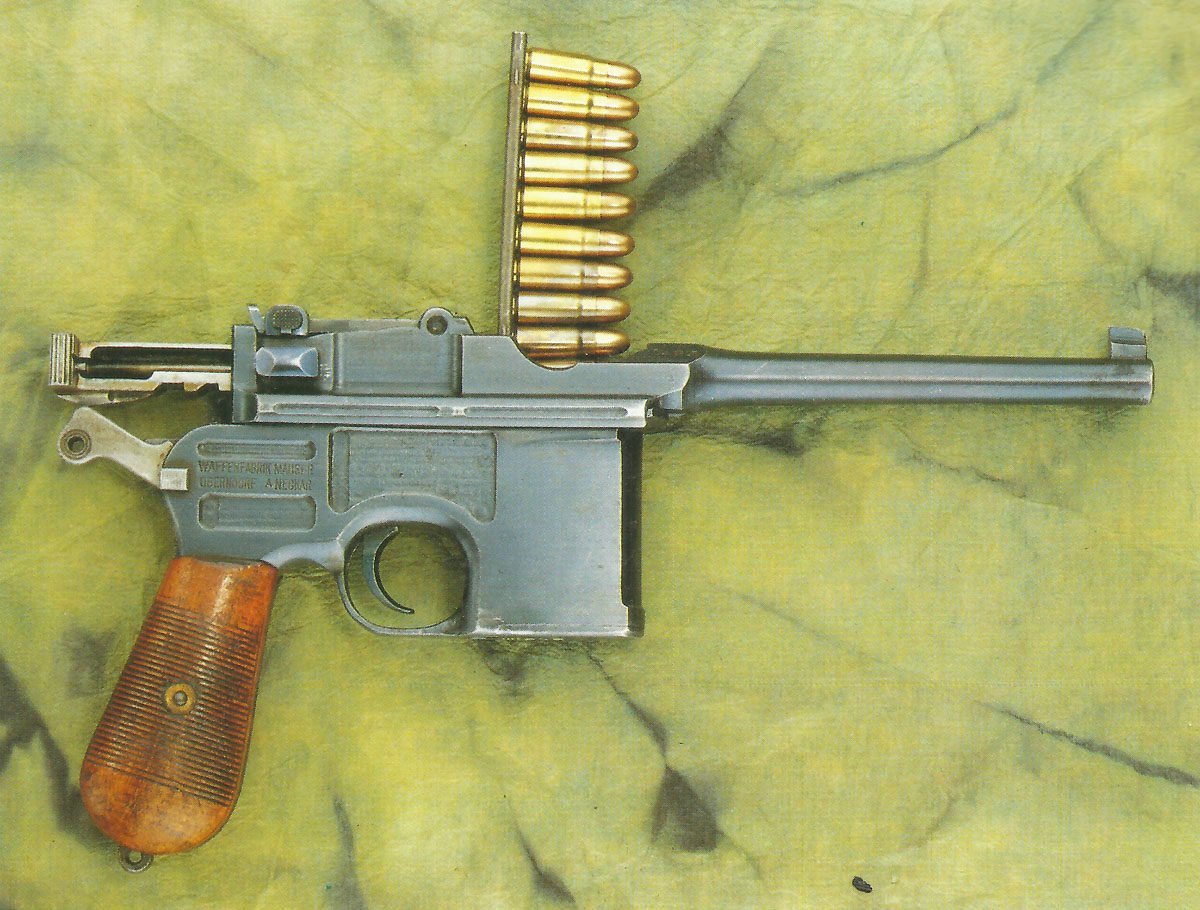British fighter plane and fighter-bomber Hawker Hurricane.
History, development, service, specifications, statistics, pictures and 3D-model.
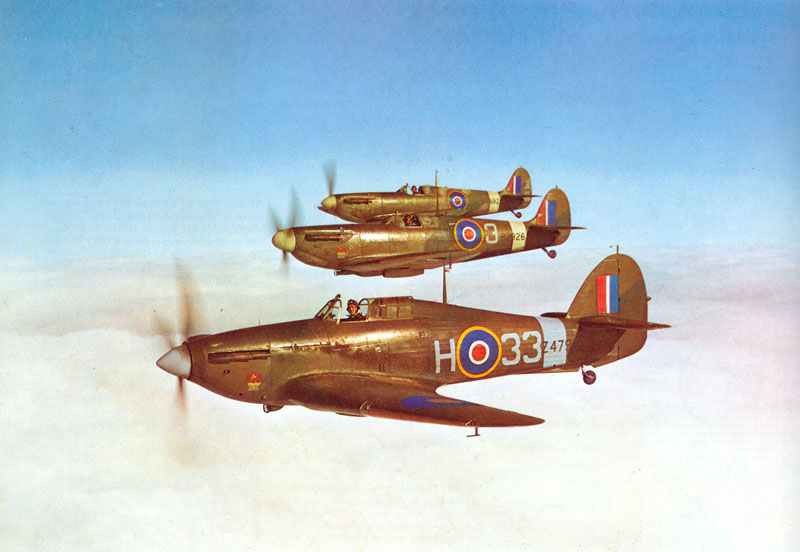
Hawker Hurricane and Sea Hurricane
Table of Contents
Hawker Hurricane I to XII, Sea Hurricane IA to XIIA.
Type: British fighter planes; later, fighter-bomber, tank buster and ship-based fighter.
Overview
The Hawker Hurricane was a British single-seat fighter aircraft designed and predominantly built by Hawker Aircraft Ltd. for the Royal Air Force (RAF). It played a critical role during the early years of World War II, especially in the Battle of Britain (1940), where it accounted for more enemy kills than the more famous Supermarine Spitfire.
Key Facts
– First Flight: 6 November 1935
– Introduced: 1937
– Designer: Sydney Camm
– Engine: Rolls-Royce Merlin
– Armament: Typically 8 × .303 in (7.7 mm) Browning machine guns (early versions); later versions carried 12 machine guns, 4 × 20 mm cannons, bombs, or rockets
– Top Speed: ~340 mph (547 km/h) (varied by mark)
– Crew: 1
Operational History
– Battle of Britain: Hurricanes made up about two-thirds of RAF Fighter Command’s strength at the start of the battle. They were robust, easier to repair than the Spitfire, and highly effective against German bombers.
– Other Theatres: The Hurricane served in North Africa, the Mediterranean, the Soviet Union (via Lend-Lease), Burma, and other locations.
– Roles: Fighter, interceptor, ground attack (Hurricane Mk. II), night fighter, and even as a Sea Hurricane (navalized version for aircraft carriers).
Legacy
– Production: Over 14,000 built (including all variants).
– Significance: While often overshadowed by the Spitfire in popular memory, the Hurricane was the workhorse of the RAF in the early years of WWII and was crucial to British air defense.
– Survivors: Several Hurricanes survive today in museums and private collections, with a handful still airworthy.
Interesting Fact
– The Hurricane’s mostly fabric-covered rear fuselage and simple construction made it easier and quicker to repair than all-metal fighters, a major advantage during the intense fighting of 1940.
In summary:
The Hawker Hurricane was a rugged, versatile, and highly significant British fighter aircraft of WWII, deserving recognition alongside the Spitfire for its major contribution to Allied victory in the air.
History
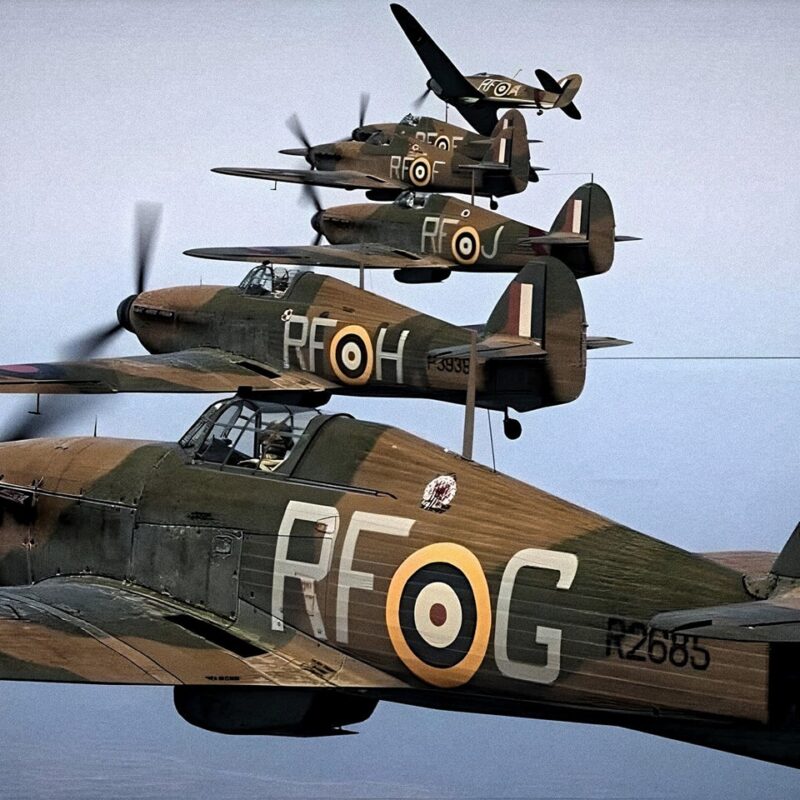
Until well into 1941 the Hawker Hurricane was by far the most numerous of the RAF’s combat aircraft, and it bore the brunt of the early combats with the Luftwaffe over France and Britain.
Designed by Camm as a Fury Monoplane, with Goshawk engine and spatted landing gear, it was altered on the drawing board to have the more powerful PV.12 (Merlin) and inwards-retracting gear and, later, to have not four machine guns but the unprecedented total of eight. The Air Ministry wrote Specification F.36/34 around it and after tests with the prototype ordered the then-fantastic total of 600 in June 1936.
In September 1939 the 497 delivered equipped 18 squadrons and by 7 August 1940 no fewer than 2,309 had been delivered, compared with 1,383 Spitfires, equipping 32 squadrons, compared with 18 1/2 Spitfire squadrons.
Gloster’s output in 1940 was 130 per month. By this time the Hurricane I was in service with new metal-skinned wings, instead of fabric, and three-blade variable pitch (later constant-speed) propeller instead of the wooden Watts two-blader. In the hectic days of 1940 the Hawker Hurricane was found to be an ideal bomber destroyer, with steady sighting and devastating cone of fire; turn radius was better than that of any other monoplane fighter, but the all-round performance of the Me 109 E was considerably higher.
The more powerful Mk II replaced the 1,030hp Merlin II by the 1,280hp Merlin XX and introduced new armament and drop tanks. In North West Europe it became a ground-attack aircraft and in North Africa a tank-buster with 40mm guns against German Panzer III and Panzer IV.
While operating from merchant-ship catapults and carriers it took part in countless fleet-defense actions, the greatest being the defense of the August 1942 Malta convoy, when 70 Sea Hurricanes fought off more than 600 Axis attackers, destroying 39 for the loss of seven fighters.
The Hurricane was increasingly transferred to the Far East, Africa and other theaters, and 2,952 were dispatched to Russia, some receiving skis. Hurricanes were used for many special trials of armament and novel flight techniques (one having a jettisonable biplane upper wing).
Total production amounted to 12,780 in Britain and 1,451 in Canada (after 1941 with Packard Merlins) and many hundreds were exported both before and after WW2.
Users: Australia, Belgium, Canada, Czechoslovakia, Egypt, Finland, India, Iran, Iraq, Ireland, Yugoslavia, New Zealand, Poland, Portugal, Romania, South Africa, Soviet Union, Turkey, UK (RAF and RN).
Pictures Hawker Hurricane


Specifications Hawker Hurricane I
Specifications:
Hawker Hurricane I | Specification |
|---|---|
Type | fighter |
Power plant | one Rolls-Royce Merlin vee-12 liquid-cooled with 1,030hp |
Accommodation | 1 |
Wing span | 40 ft (ca. 12 m) |
Length overall | 32 ft (9.75 m) |
Height overall | 13 ft 1 in |
Weight empty | 4,670 lb (ca. 2,118 kg) |
Weight loaded | 6,600 lb (ca. 2,994 kg) |
Max level speed | 318 mph (ca. 512 km/h) |
Initial climb | 2,520 ft (768.1 m)/min |
Service ceiling | 36,000 ft (ca. 10,973 m) |
Range | 460 miles (ca. 740 km) |
Armament:
Hawker Hurricane I | Specification |
|---|---|
in wings | eight 0.303in Brownings; each with 333 rounds (Belgian model four 0.5in FN-Brownings) |
Service statistics:
Hawker Hurricane | figures |
|---|---|
First flight (prototype) | 6 November 1935 |
Production delivery | 12 October 1937 (in Canada as Mk X January 1940) |
Final delivery | September 1944 |
Total production figure | 14,233 (of these 2,952 for Russia) |
Production figure 1940 | c. 130 per month |
Animated 3D model Hawker Hurricane I
References and literature
Combat Aircraft of World War II (Bill Gunston)
Technik und Einsatz der Kampfflugzeuge vom 1. Weltkrieg bis heute (Ian Parsons)
Das große Buch der Luftkämpfe (Ian Parsons)
Luftkrieg (Piekalkiewicz)
Flugzeuge des 2. Weltkrieges (Andrew Kershaw)
The Encyclopedia of Weapons of World War II (Chris Bishop)
Die Schlacht um England (Bernard Fitzsimons, Christy Campbell)
Kampfflugzeuge (Bill Gunston



